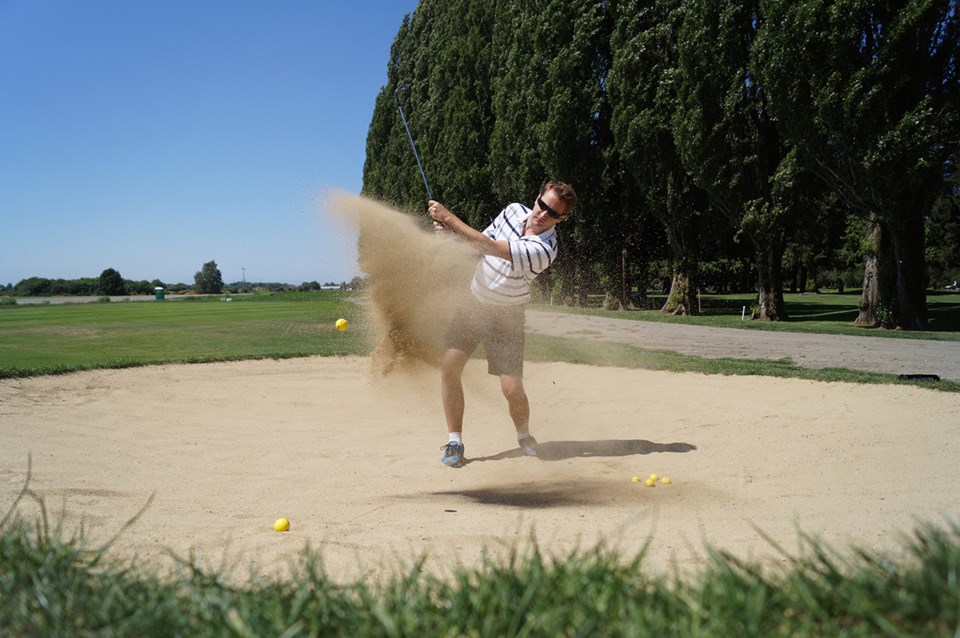The sandbox. The beach. The uncompromising bunker.
This week, Richmond Country Club head pro Mark Strong and I lathered up with sunscreen, put our shades on and spent a sweltering hour in bunkers.
All I can think about now is chicken feet.
In your standard bunker shot around the green, Strong says there are three trajectories to consider, forming the shape of what appears to be the aforementioned chicken foot.
First, consider where you are aiming the ball (in all likelihood it will be at the pin). This is the base trajectory.
Second, open up the club face so that it points away from you and the aim point (pin).
Third, aim your feet and body, ever so slightly, so that they point off to the other side.
Now, keep the ball positioned under your chin and come out swinging, with the club coming down just behind the ball.
Make that sand splash like a frantic, four year-old child building a sand castle.
I think the hardest thing for us hacks to get used to, is becoming confident with taking a harder swing than what would normally be expected of you, say, in the rough or the fairway.
After I somewhat mastered some decent control, we moved on to various positions from within the bunker.
So, if the ball is stuck on a hill, you’ll need to get level with the slope; an upslope shot will go higher and a downslope shot will come out more flat. On a downslope shot you need to open up your club’s face to steal back some loft.
On a sidenote, all of this talk about opening up my club’s face makes me think about a quote from Homer Simpson:
“Mmmmm open club face sandwich.”
Which can be found in most clubhouses!
Strong and I didn’t get to fairway bunkers, which are yet another beast to deal with.
I asked him if it’s wise to avoid bunkers at all costs. He said it isn’t; in other words, don’t change your swing; trust your aim and club selection.
While it’s just that easy, I think we understand what he’s saying — cross that bridge (bunker) when you get to it.
A lot of these tips can really only be understood by being out on the course.
Once you can figure out how your ball reacts out of the sand, you can probably apply all the same measures you take for chipping (loft of the ball, where you need to aim it, and how much you need to choke up on the club).
In addition, remember the basic tenants of your swing, such as keeping your shoulders straight and aligned with your feet, as well as setting up (aiming) properly.
There’s also the kind of sand that you’re dealing with. I imagine most of the bunkers in the Lower Mainland are coarser, whereas in a desert or tropical climate the local sand may be more fine. Either way, I find Richmond’s sand fairly coarse.
I recently picked up a few golf magazines on my iPad and while they were helpful, I found myself contorting into golf stances in my living room.
Again, it goes to show reading about golf, while helpful, really isn’t any sort of substitute for actually playing; you have to go out and do it. So, it’s probably a good idea to keep a club behind the couch and remove all knick-knacks within the radius of your swing.
I was just about to write, don’t tell the wife! On that note, one of the things I noticed about those golf magazines is how incredibly biased they are toward men.
It’s not so much the advertising or the subjects of the story (and there are women’s golf magazines) but rather the language.
I’ve noticed in my writing as well, that I tend to be thinking in the back of my head that I’m only speaking to men. The great thing about golf is that it’s a co-ed sport and men aren’t any more capable of learning about it than women.
In fact, the only person I know to have gotten a hole-in-one is my mom!



